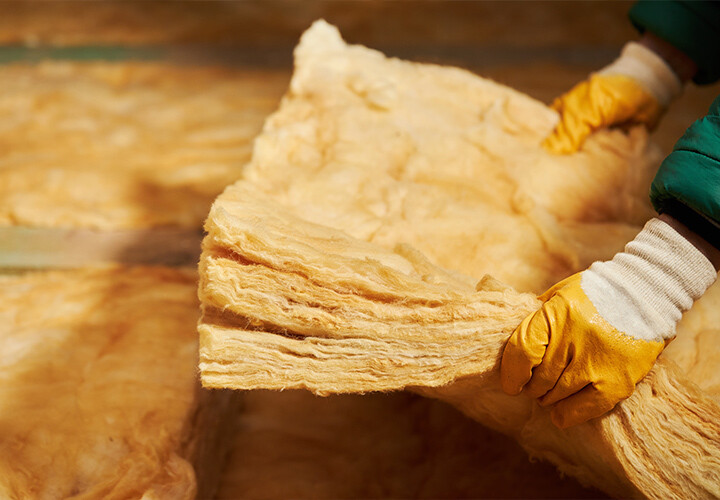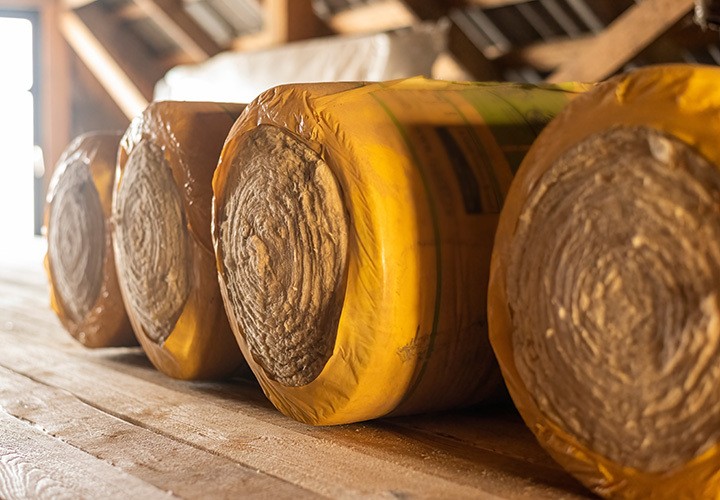Resources & Information
A 10-Step Guide to Home Insulation and Energy Efficiency
As the global consciousness pivots towards environmental responsibility and sustainable living, optimising our homes for energy efficiency has become a paramount goal.
Homeowners are realising the importance of home insulation for saving money and reducing their carbon footprint. This guide provides 10 steps to improve home insulation and energy efficiency all year round. It covers choosing the right materials, sealing air leaks, upgrading windows and doors, and insulating floors to understand how to make your home more energy efficient.
1. Conduct a Home Energy Audit
Conducting a thorough home energy audit is the foundational step towards achieving an energy-efficient home. By identifying specific areas of energy loss, homeowners can strategically target improvements, ultimately leading to enhanced energy performance and reduced utility costs.
Advanced tools used by Ignite Property Group, like thermal imaging, can identify areas where heat or cool air is escaping. This assistance enables homeowners to determine the areas in their homes that require improvements. Air leakage tests, conducted with tools like blower doors, can detect hidden drafts. Whilst energy meters provide data on energy use, enabling homeowners to make informed decisions on how to save energy.
2. Evaluate Current Home Insulation
A meticulous evaluation of current home insulation levels is essential for understanding the existing thermal dynamics of a home. Assessing and subsequently enhancing insulation in key areas is critical for temperature control and ensures a comprehensive approach to energy conservation.
When insulating your home, thoroughly inspecting the attic, walls, floors, and basement insulation provides insights into potential areas of improvement. Adding thermal coverage in areas with poor insulation helps maintain ideal indoor temperatures effectively and efficiently.
3. Seal Air Leaks
Minimising energy loss through air leaks is fundamental to creating an energy-efficient home. Stopping air leaks saves energy and money by reducing the workload on heating and cooling systems.
Weatherstripping on doors and windows stops drafts, while caulk or spray foam seals gaps and cracks. These measures not only enhance insulation but also contribute to a more comfortable and consistent indoor environment.
4. Choose the Right Insulation Materials
Selecting appropriate insulation materials is important for ensuring optimal thermal performance. Considering R-value, material type, and environmental impact helps homeowners choose efficiently and sustainably.
Using Earthwool Loft Roll 44 when insulating your home has many benefits. It has no odour and is resistant to decay. Moisture does not affect it, and it repels pests. This makes it good for walls, crawl spaces, and roofs, making them all more energy-efficient.
5. Insulate your Attic and Roof
The attic and roof are primary areas where heat loss and gain occur. Good insulation is important for keeping a comfortable temperature inside and using less heating and cooling fans.
At Ignite Property Group, we recommend homeowners use Earthwool Loft Roll 44 to insulate their roofs. It is usually placed in two layers for better thermal insulation. You place the first layer between the joists and place the second layer on top at an angle of 90° to the joists.
Installing insulation in the attic creates a thermal barrier, preventing heat from escaping in winter and entering summer. Additionally, considering reflective coatings or radiant barriers for the roof further enhances energy efficiency by minimising solar heat absorption.
6. Upgrade Windows and Doors
Windows and doors are common culprits for energy transfer, impacting indoor temperature control. Upgrading to energy-efficient options with insulated frames significantly reduces this transfer, leading to increased overall energy efficiency.
Installing double-glazed or triple-glazed windows provides superior insulation, creating a buffer against outdoor temperatures. Similarly, choosing doors with insulated frames further contributes to maintaining a consistent indoor climate.
7. Consider Insulating Floors
Insulating floors is crucial for controlling both temperature and moisture in crawl spaces and basements. This step not only enhances comfort but also contributes to the overall efficiency of the home.
COSiFLOOR is great for DIYers and contractors. It's easy to install anywhere and can reduce heat loss effectively. This insulation keeps floors warm, saves energy, and prevents heat from escaping through the ground, making the area below cosy. This measure helps keep indoor temperatures stable in areas with big temperature differences.
8. Utilise Curtains and Blinds
Employing window coverings strategically enhances temperature control and reduces dependency on artificial lighting, further contributing to energy savings.
During winter, heavy curtains provide additional insulation, retaining warmth within the living spaces. Using light blinds in summer reflects sunlight, reducing the need for air conditioning by minimising heat absorption.
9. Install a Programmable Thermostat
A smart thermostat adjusts temperature based on daily routines, saving energy when not needed and using it efficiently when necessary.
Setting lower temperatures during sleeping hours or when the house is unoccupied prevents unnecessary energy consumption. Programmable thermostats save energy by adjusting heating and cooling based on occupancy patterns, leading to long-term energy savings.
10. Regular Maintenance
When considering how to make your home more energy efficient, regular maintenance is the most important factor for keeping insulation and heating systems working at their best.
Promptly replacing damaged insulation, cleaning ventilation filters regularly, and conducting seasonal system check-ups mitigate wear and tear. These actions help home systems last longer and keep energy use efficient all year. Regular maintenance serves as a proactive approach to addressing potential issues before they escalate, safeguarding the long-term sustainability of energy-efficient practices.
Pro Tip: For an even more efficient home, consider the insulation services offered by Ignite Property Group Ltd. Their bespoke insulation, thermal imaging, and snagging services ensure your home is as energy-efficient as possible.
Bringing it Home: Final Thoughts on Energy-Efficient Living
These ten steps guide you towards a sustainable and comfortable home that saves energy. Starting with a comprehensive home energy audit, we navigate through the meticulous evaluation of Thermal imaging surveys, strategic sealing of air leaks, and the careful selection of the best home insulation materials.
At Ignite Property Group Ltd, we understand the importance of this journey towards a more sustainable lifestyle, and we want to assist you in creating an energy-efficient home. Whether you need expert advice when insulating your home, guidance on implementing these steps, or assistance in choosing energy-efficient products, our dedicated team is here to support you in understanding how to save energy.
Ignite a brighter future for your home – one that combines comfort with environmental responsibility. For any questions or advice or to embark on your journey of energy efficiency with us, contact us.
Related
Insulation FAQs
Find the answers to some of our most frequently asked questions about insulation and how our services at Ignite Property Group can help elevate your home's energy efficiency.
Read MoreA Comprehensive Guide to Calculating Loft Insulation Requirements
Learn how to measure your loft space, choose the right insulation materials, and ensure optimal ventilation for energy efficiency.
Read More
